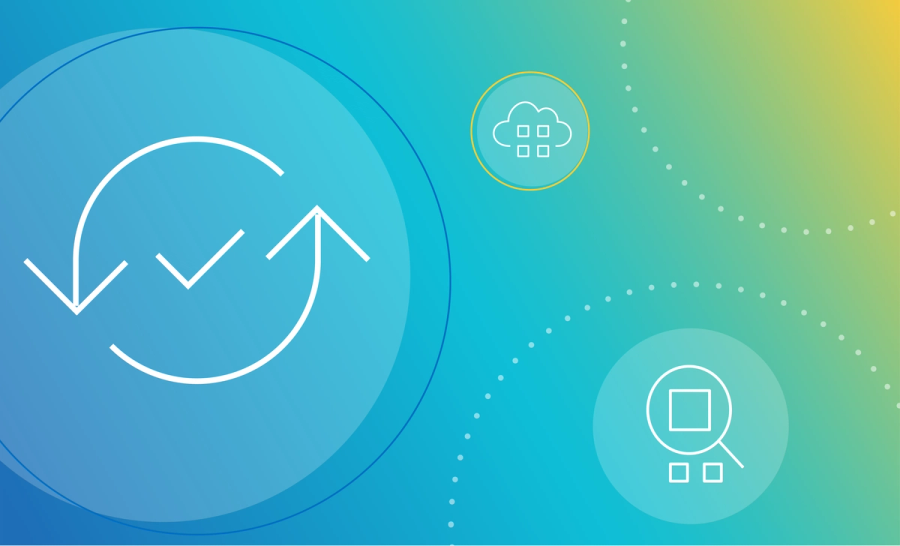Don’t let bad data drag you down: A retailer’s guide

Retail is a dynamic and competitive market. It needs to work around the fickleness of customers and rapidly evolving trends. In addition to the traditional brick-and mortar-stores, the retail business today includes online and mobile stores. Every process at every stage of these stores relies on data. And the role of data is getting bigger in supply chain management, omnichannel customer experiences, and target marketing strategies. A recent article by Forbes concludes that the new retail order has given retailers access to massive amounts of accurate, real-time data and greater visibility into the competitive landscape.
The right kind of data can drive great innovations in retail. It can boost the competitive edge and raise the brand value. However, getting quality data can be an enormous challenge, and retail businesses usually end up working with bad data. This blog outlines what bad data means and how you can stop it from hurting your retail business.
What is bad data in retail
Bad data is data that is inaccurate, incomplete, inconsistent, old, or simply unsuitable for the planned use. As an example, consider that you want to segment customers on age. Then data about their recent travels cannot be used, however accurate it may be.
A typical retail business can have a number of reasons for getting bad data.
Human Error
Human errors are always a part of the business. While most of the work in retail is automated today, human errors still occur. What if an item code is blurred and your staff enters the code manually? What if the items get displayed on the wrong shelf? What if a returned item is not back in the inventory? The opportunities for human errors are considerably high in retail. Surveys and marketing campaigns are also at risk of human errors.
Poor management of SKUs
SKU (Stock-Keeping Unit) is a unique identification number that defines an item at the identifiable inventory level. In retail, SKU includes the style, size, color, and other classes. It may also include a serial number. SKU data helps understand sales trends and customer preferences. If the categorization of SKU is not correct, data will have inconsistencies. A wrong code on an item can lead to inaccuracies in data. SKUs not getting regularly reviewed or updated is a common cause of bad data in retail.
Outdated, incomplete, or inaccurate item descriptions
The retail business uses a lot of codes and corresponding descriptions for each product or service. What if they do not match? What if an item description has changed but is not updated in the inventory system? What if the descriptions of the offered products and services are incomplete? Poor descriptions of retail merchandise are one of the biggest causes of bad data.
Outdated, incomplete, or inaccurate customer information
Just as the description of goods and services is a concern in retail, information about customers is also an equally important concern. What happens when your marketing emails get sent to the wrong email id? Or your shipment gets returned due to an incomplete address? What level of customer service can you offer with outdated customer data? Poor customer information is one cause of bad data that hurts the most.
Siloed customer data
Customer data is collected at multiple points of customer interactions. You may get a customer phone number from a brick-and-mortar store and an email id from the online store. You may extract customer lifestyle preferences from surveys and their payment details from the transactions at the point of sale. All this fragmented information can also have varying formats, adding to inconsistencies. The siloed data does not help building accurate customer profiles and generating actionable insights.
There can be many more possible causes of bad data that can hurt retail profits and growth.
What happens when you have bad data?
- Some products remain unsold, while some get returned.
- Inventory records show mismatches.
- Customers complain about wrong products delivered or higher prices charged.
- The customer base shrinks.
- Revenue and profit keep falling.
How bad data hurts your retail business
Bad data can hurt at several levels. The immediate impact may look small, but can multiply in no time.
Financial loss
The average annual financial cost of bad data can be as high as $12.9 million. For retail, the financial loss due to bad data eats into the already thin profit margin. Retail is focused on individual customers, and losing one customer can mean losing the customer lifetime value, which can be significantly high. In case of key decisions like closing some stores or opening new stores, the financial cost of using bad data can affect for many years. In another case, if the data fed into credit-scoring algorithms is flawed, problems can pile up quickly. Besides these, the hidden costs of bad data can be very difficult to assess and often get overlooked.
Wasted resources
It takes a lot of time and effort to address all the issues created by bad data. The rule of ten states that it costs ten times as much to complete a unit of work when the data is flawed than when the data is perfect. It is an interesting estimate, indicating how much money can be wasted on bad data. Prevention, on the other hand, costs 10% of the cost of remediation, and just 1% of the cost of failure.
Missed opportunities
Consider a simple example of an incomplete product description. The product may not turn up in the search results, and you lose an opportunity to convert it into revenue. In another case, outdated contact details mean your offers never reach the customer, and you miss multiple opportunities to earn from that customer. Forbes reports that Data scientists spend 60% of their time cleaning and organizing data. It can lead to more human errors and a delayed response to market trends. When bad data powers analytics, opportunities get missed, and the losses can be much more.
Compliance Risk
Compliance with consumer data protection and other privacy laws are critical to the retail industry. Poor-quality data can either delay or fail regulation compliance. For example, GDPR’s Article 5 states that personal data should be accurate and up to date. A recent report states that GDPR fines increased by nearly 40% in 2020 compared to the previous 20 months, indicating how strong the non-compliance consequences can be. Apart from non-compliance fines and other legal expenses, business survival is at stake. Forbes insights report highlights that good-quality data can be the difference between compliance and millions of dollars in fines.
Loss of credibility and brand value
How do customers look at the retailers if the experience is constantly below par? How do investors evaluate retailers making poor business choices and losing face? The credibility and brand value erodes fast if your decisions are based on bad data.
A recent Gartner research highlights that AI is key in enabling retailers’ shift into merchandising processes that move away from product and toward customer behavior hierarchies. This essential shift entirely depends on using data efficiently and quickly for trusted analytics. Naturally, it has no place for bad data.
How you can stop bad data from hurting your business
When it comes to bad data, prevention is the best approach. You can prevent bad data from entering your systems in strategic steps.
- Add quality checks at every step of the data journey.
- Automate quality checks to efficiently identify bad data.
- Monitor your data stores to detect issues early.
- Locate the root cause of bad data and fix it at the source.
Data quality has become a critical goal of every business, especially the customer-focused retail business. Investing in a good data quality solution can give you complete visibility into the quality of your data and deliver most of the above points. You can also use the tips for improving data quality and plan for data governance.
Choose the right data quality solution, and you never have to worry about bad data. You can run highly effective marketing campaigns, create accurate reports, deliver exceptional experiences to your customers, get a better ROI, and inspire your teams for growth.
How the right data quality solution can boost your retail business
Collibra Data Quality & Observability (DQ&O) helps you go beyond monitoring and automating quality checks. You can leverage the ML-driven, auto-generated, adaptive rules to quickly respond to changes in data. Besides reducing your efforts in rule writing, Collibra DQ&O ensures that the rules are error-free. With these rules, you need not worry about the data arriving in different formats.
The solution leverages data observability to monitor your data pipelines and data stores continuously. You can proactively detect anomalies and prevent them from entering your systems. With the self-service data quality feature, everyone in your organization can view key data quality metrics, identify issues, and assign them to the right persons.
With Collibra, your retail business works with high-quality sales data, and you can efficiently manage market demands. You can build rich customer profiles and get insights into customer choices. Use those insights to personalize customer experiences and increase customer lifetime value. Better inventory management and efficient operations help you optimize your supply chains. Faster and more accurate reporting means that you stay compliant with regulatory requirements. The solution scales easily, and you can enjoy more customers, higher revenue, and a better ROI.
What happens when you have the right data quality solution?
- You spot trends early.
- You set competitive prices.
- You make accurate product recommendations.
- Your customers enjoy shopping with you.
- Your sales reporting is precise and drives better forecasting.
- Your inventory management is better.
- Your suppliers are happy.
- Your business continues to be compliant.
- You have better brand value and several growth opportunities.
One of the largest food and beverage companies in North America chooses Collibra Data Quality & Observability for accurate and secure financial reporting.
Consider the recent case of one of the largest food and beverage companies in North America. They were looking for accurate financial reporting on their channel partners. Being in retail, they needed the reports to be accurate and reflect the most recent transactions. They were also concerned about the time spent generating reports and wanted to address this issue innovatively.
After evaluating potential solutions, they decided to go with Collibra DQ&O for the following winning points.
- Assured data accuracy and completeness
- Self-serve data quality and ease of use
- Assured data security and privacy protection
- Quick scalability
- Integration with Collibra Data Intelligence Cloud to achieve compliant access management and pave the way for successful digital transformation
In summary
In today’s digital economy, data is your key strategic asset. But in retail, bad data turns up very often, and its cost can extend beyond financial losses. Trust Collibra DQ&O to stop bad data from hurting your retail business. Leverage it to optimize your supply chain, maximize your profit, and delight your customers.
Choose Collibra Data Quality & Observability. Convert your data into a reliable asset and boost your retail business.
Request a demo or start a free trial today.
Related articles

Data QualitySeptember 12, 2024
What is data observability and why is it important?

AIJuly 15, 2024
How to observe data quality for better, more reliable AI

Data QualityNovember 8, 2024
Announcing Data Quality & Observability with Pushdown for SAP HANA, HANA Cloud and Datasphere

Data QualityNovember 16, 2023
The data quality rule of 1%: how to size for success
Keep up with the latest from Collibra
I would like to get updates about the latest Collibra content, events and more.
Thanks for signing up
You'll begin receiving educational materials and invitations to network with our community soon.
